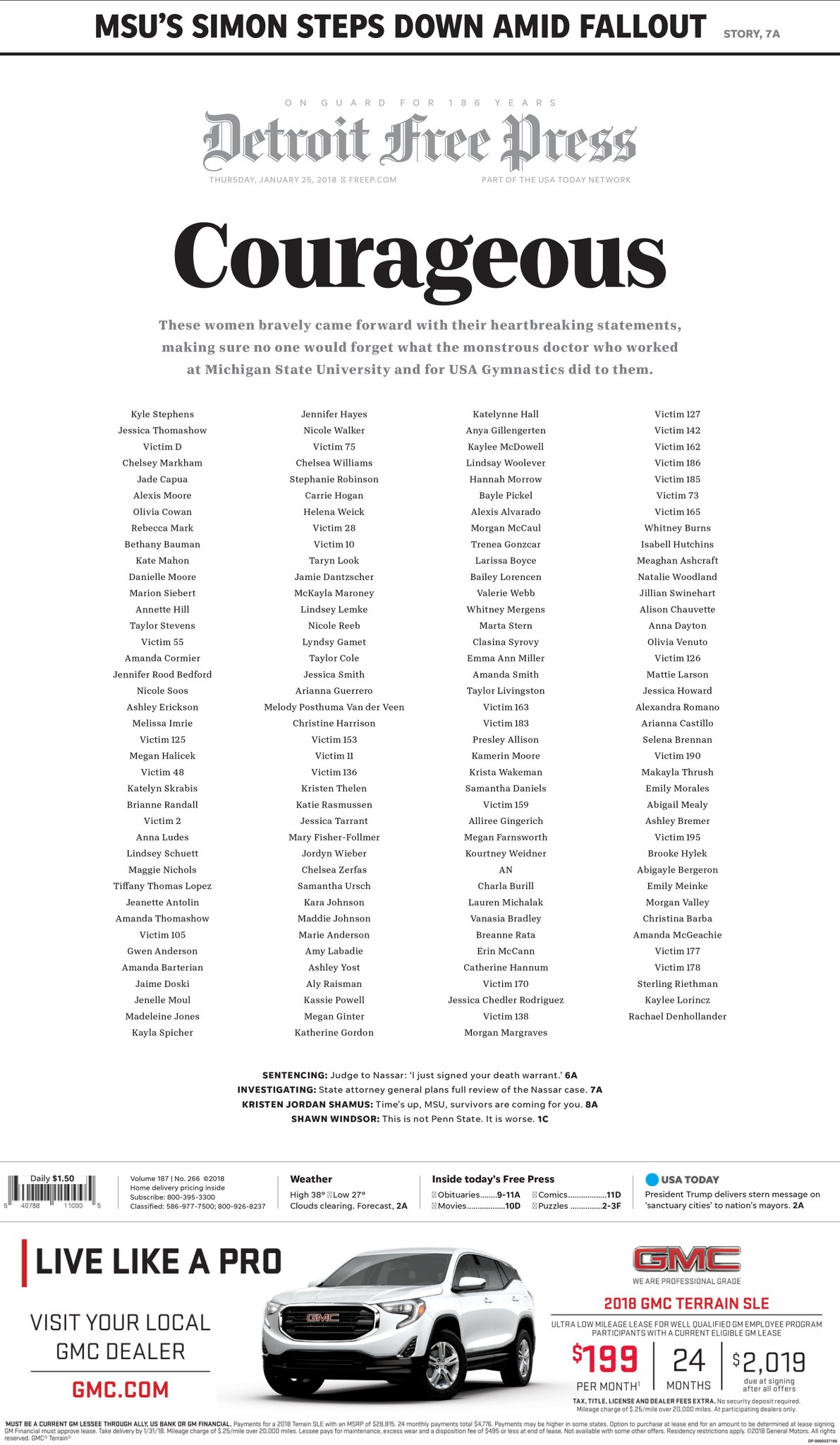
A pedophile is going to prison and if there’s any justice at all, the entire governing body of U.S. gymnastics will soon be out of work too because the news is not fake.
It was the investigative team at the Indianapolis Star that first reported in 2016 that USA Gymnastics had covered up pedophaelia.
Reporter Tim Evans got the usual reaction journalists get as soon as his story, featuring an interview with pedophile Larry Nassar, was published in late 2016, he revealed this week.
Here’s one of many examples: “… I am 150% sure that he is innocent, and I do not appreciate the one-sided reporting on this issue. Please, I urge you to look beyond making money by writing scandalous stories and consider the huge, unfair negative affect this is having on an innocent man’s life.
These false allegations bring me and my family so much sorrow. Please listen and also report on the many, many people who are coming to this man’s defense. By focusing on these false allegations, you are doing good to no one.”
Evans’ story led to 150 women coming forward to report that Nassar had molested them.
In Michigan, the Detroit Free Press started investigating how it is that officials of Michigan State University, where Nassar worked for two decades, couldn’t know he was molesting women.
It found they knew, and this week, the head of the Big Ten university resigned, leaving with a golden parachute as the newspaper made sure its readers knew that the women whose stories they doubted, were right.
Every day across America, the country becomes a little better place because investigative reporters shake off the bricks thrown by readers, viewers, and listeners who refuse to accept what they don’t want to believe, and hold accountable the powerful who corrupt decency on a daily basis.
You might not have noticed, for example, the article in the bottom corner of the front page of the Star Tribune yesterday in which state legislators unveiled “an ambitious plan to accelerate investigation of elder abuse and reduce the state’s massive backlog of unresolved cases.”
Why? Because last November, the newspaper blew the lid off the reality of senior care homes in Minnesota, where residents are beaten, robbed, and sexually assaulted. It also detailed allegations a month later that reports of abuse were thrown in the trash by state employees, who didn’t even read them.
If in the future, a senior citizen lives out his/her days in relative safety, it won’t be because politicians and state workers did their jobs. It’ll be because a small group of newspaper reporters and editors did theirs.
This reality counts for nothing among most Americans anymore who said recently that they don’t believe their news media. These are, for the most part, the same people who didn’t believe the molested women of Dr. Nassar.
In the Capital Times today, publisher Paul Fanlund acknowledges the “ocean of contempt” toward journalism, documenting its long history in American society.
“The best thing to do with a bully is don’t back down,” he recalls former Washington Post journalist Ben Bagdikian saying in an interview years ago, after he risked everything the government could throw at him for deciding to publish Daniel Ellsberg’s Pentagon papers.
Months after that, he posed as a murderer and was imprisoned in Pennsylvania’s maximum security prison to reveal the violence, racial tension, and conditions inside.
“How many of its highly critical respondents, I wondered, would hold risk-taking journalists like Bagdikian in high esteem today?” Fanlund wonders in today’s column.
Not many, he suspects, pointing to a recent survey on trust in the news media.
But he noticed something important in that survey. Those most likely to distrust what is reported, are the least educated and informed among us.
Tellingly, the study quizzed people on their knowledge of current events and whether they think they can discern truthful journalism. Results divided respondents into segments — the biggest were “knowledgeable optimists,” who are informed and think it possible to find the truth, and “inattentive skeptics,” who are less informed and pessimistic that the truth can be identified.
The optimists tended to be better-educated, coastal Democrats who rely on newspapers and use multiple sources; the skeptics had less education, tend to be Republican and rely more on talk shows.
This all feels predictable, but it is noteworthy that, in these toxic times, nearly half of the respondents — 48 percent — were in the “optimist” category, in which respondents believe there are traditional, aggressive sources of journalism they can depend on. They are also the news consumers, I suspect, most likely to admire journalists like Bagdikian.
The talk shows and blathering fools of cable TV make a good living whipping up a hatred of journalists and their well-sourced stories.
But this week, 150 women got what constitutes justice for being molested, because someone was willing to listen to courageous people with a story to tell.
Related: Trump calls report he ordered Mueller’s firing ‘fake news’ (MPR News)

